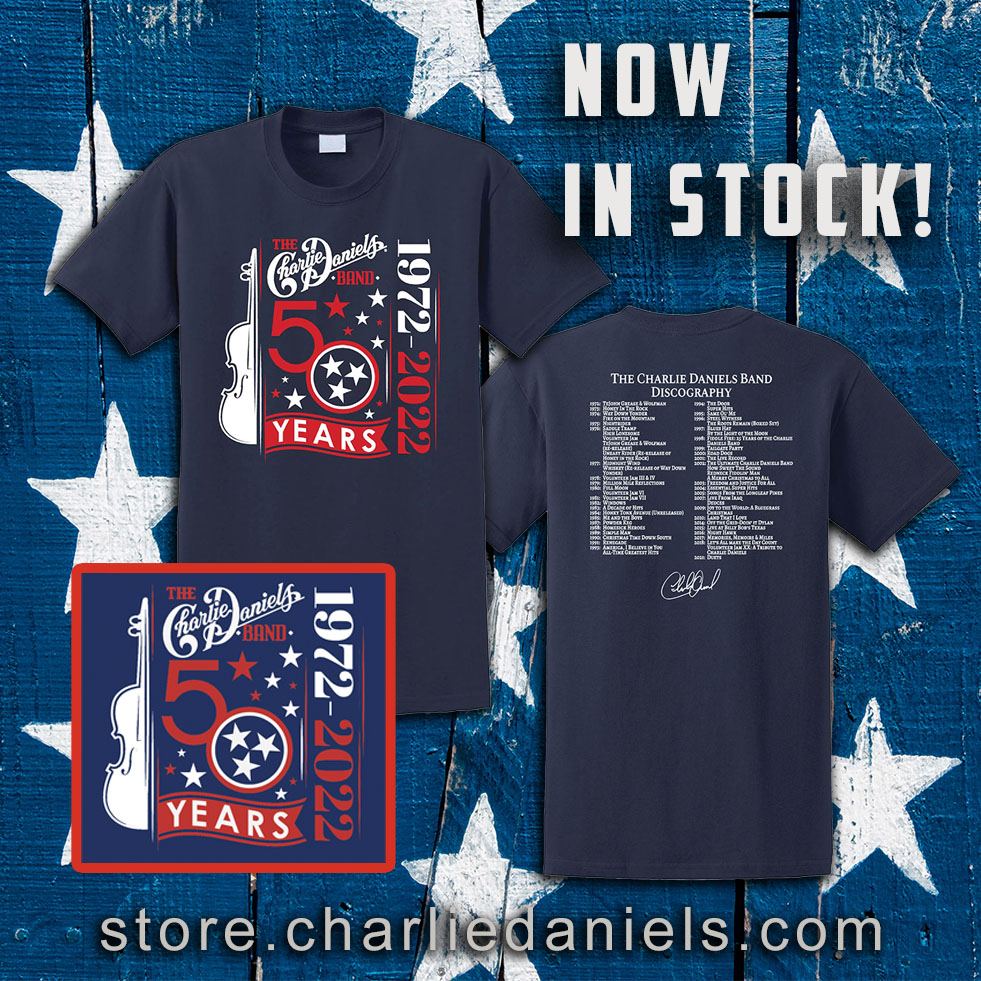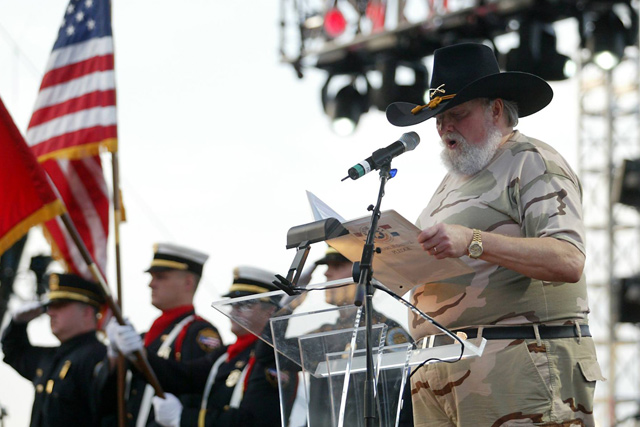That’s Been Fifty Years Ago… 50 Years of the CDB Part 2: Te John, Grease and Wolfman
The Te John, Grease and Wolfman album may not be the best remembered of the CDB’s albums but it was the very first one on Kama Sutra Records, a sister label of Buddah Records. Buddah was primarily an R&B/Soul label, but Kama Sutra’s roster ran the gamut from Gene Vincent to The Lovin’ Spoonful and Stories of “Brother Louie” fame, among others.
Buddah was run by Neil Bogart – who would later form disco label Casablanca – and Art Kass ran the Kama Sutra side.
Dad’s management at the time, Donald Rubin and Charlie Koppelman, arranged for the band to record in Jimi Hendrix’s studio, Electric Lady Studios with producer Gary Klein.
The first track was a familiar song, that is if you were one of the very few that had the Capitol Records self-titled 'Charlie Daniels' album.
“Great Big Bunches of Love” kicked off the album, just as it did the Capitol record. The biggest difference from the first recording was Taz’s… I mean “Grease’s” B-3 which was evident from the intro to the ending.
I remember this song well, I remember singing it around the house when I was just a little guy. It’s a fun song,
“We got great big bunches of love
People, what a feelin’
It reaches clear up to the ceiling
And out through the roof
And that’s the truth”
Next is “I’ll Try Again Tomorrow,” a melancholy tune heavy with B3 and mandolin sounds about a man who seems to be struggling with the state of the world, worrying about possibly living in the End Times, and just struggling with his life in general.
But as bad as things seem to him, he’s still going try again tomorrow.
That’s always an important message, no matter how bad things seem, tomorrow is a fresh start and a chance for things to get better.
The next song is a rockin’ blues cover of the song “Parchman Farm” but is listed on the album as “Parchmont Farm," but it’s still a hot tune, with Grease - a pre-Taz William Joel DiGregorio - handling the vocals. It’s worth noting that five – well, four and a half - of the songs on ‘Te John, Grease and Wolfman’ are sung by Taz. It was not unusual for Taz, Tommy Crain, Bruce Brown, etc... to do a song on a CDB album, but this is the only time that I can think of that four - and a half - of the tracks were not sung by dad, but by another vocalist.
The theme of “tomorrow” pops up again in the next track, “Tomorrow’s Gonna Be Another Day” which is a much more upbeat and optimistic view about the future, the singer while working hard for very little money, he vows:
“Tomorrow morning, I swear to my soul
I’m gonna go cut me a hickory pole
Sit right back by the fishin’ hole all day”
The same storyteller on different days, or two different characters…?
You be the judge.
Then there’s the next tune sung by Taz/Grease, “Black Autumn,” written by dad and Earl “Te John” Grigsby which sounds very darkly operatic or almost like the introduction to Elton John’s “Funeral For a Friend.”
The lyrics are a bit ambiguous, but the imagery it paints seems to be another reflection of the horrors of war, this was the height of Vietnam, after all, so it definitely fits.
“In the City” is a rollicking number contrasting the city life of the rich and the poor and how he is contemplating just hopping a southbound train to get away from it.
The next song should be familiar to fans of the CDB’s 1974 ‘Fire on the Mountain’ album, “New York City, King Size Rosewood Bed.” This is Taz/Grease’s third song on the album, and it’s a much more laid-back version than what appears on FOTM, it’s mostly electric piano, percussion and pretty light on the guitar for the most part.
“Evil” is a super-fast song that also turned up on a later album, 1975’s ‘Nightrider,’ but nobody could ever confuse the two. Taz does most of the singing on the chorus throughout the song, but dad takes the verses and contains the first reference to Wooley Swamp – a real place in Bladen County, NC. I definitely like the one on ‘Nightrider’ better, but that’s just me.
“Billy Joe Young” is yet another Taz/Grease song. The song about the unsavory title character at times brings to mind a faster version of “Sunshine of Your Love” with hints of “In-A-Gadda-Da-Vida.”
The last song is another blues cover, “Drinkin’ Wine Spo-Dee-O-Dee” which I did not realize until I was many years older that it had also been covered by Jerry Lee Lewis, Johnny Burnette and others. The performance sounds like a small informal party with the crowd singing along.
Why did Taz sing so many songs? If I had to guess is that dad was trying to make what he felt was a commercial record and maybe he didn’t think he had found his voice yet. Dad said that he had done covers for so many years that he tried to emulate the singers whose songs they were performing that he didn’t really have a distinct sound of his own yet, but he would, as we all know.
One last thing I wanted to mention was the album cover - or covers actually. The Kama Sutra cover had an unusual gatefold with a picture of dad sitting on the front porch in a rocking chair, and because of the way the picture was taken, it was meant to be opened from top to bottom instead of side to side; “portrait” instead of “landscape” to use a more modern term.
When CBS/Epic Records purchased the CDB’s Kama Sutra catalog, the decision was made to change the covers of the three albums that predated ‘Fire on the Mountain,’ so instead of dad on the porch, you had a painting of an antique fan with dad, Te John, Grease and Wolfman each represented on a separate fan blade.
Nope, I don’t understand it either.
*UPDATE*
After I posted this soapbox, I wanted to examine the song "Billy Joe Young" a little closer, so I looked it up in my iTunes collection and saw a version on an album that dad produced on guitarist Roy Buchanan around 1970 or 1971, but wasn’t released until 2004, years after his death. Among the tracks on that collection are two songs that would end up on 'Te John, Grease and Wolfman,' “Black Autumn” and “Billy Joe Young” along with one that would soon be recorded for the following album, “Honey in the Rock,” aka “Uneasy Rider,” and again for 'Nightrider.'
I’ll touch on that Roy Buchanan project in the next soapbox.
What do you think?
Let's All Make The Day Count!
Pray for our troops, our police, the Peace of Jerusalem and our nation.
God Bless America!
— Charlie Daniels, Jr.
PLEASE READ BEFORE YOU POST
Feel free to comment on soapboxes, but please refrain from profanity and anonymous posts are not allowed, we need a name and you MUST provide a valid email address. If you provide an email address, but leave the name as "Anonymous" we will pick a name for you based on your email address. No one other than website administrators will see your email address, not other posters. If you post without a valid email address, your comment (whether positive or negative) will be deleted. — TeamCDB

Check out "Geechi Geechi Ya Ya Blues" from Beau Weevils - 'Songs in the Key of E'







Comments
Post a CommentComments
Posted by Plowboy
Posted by Larry